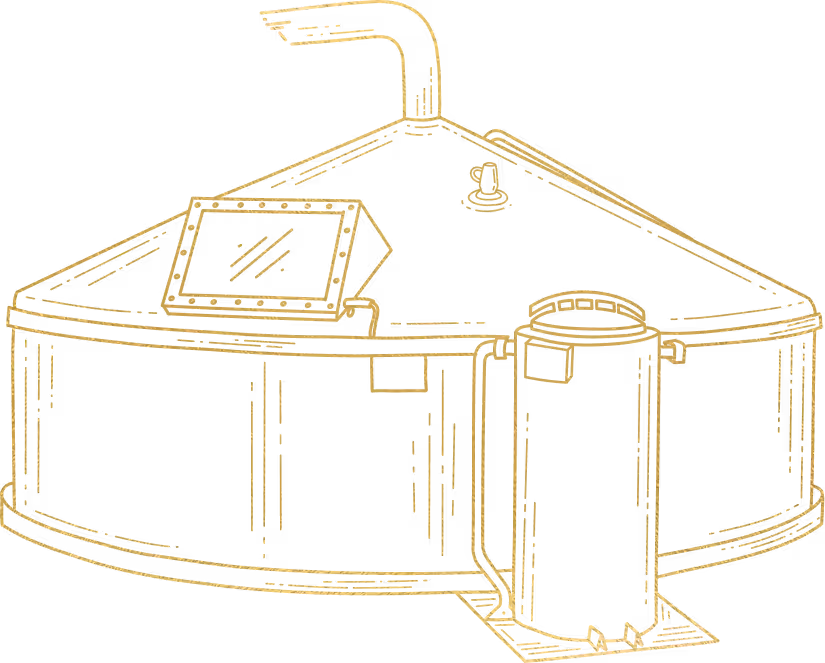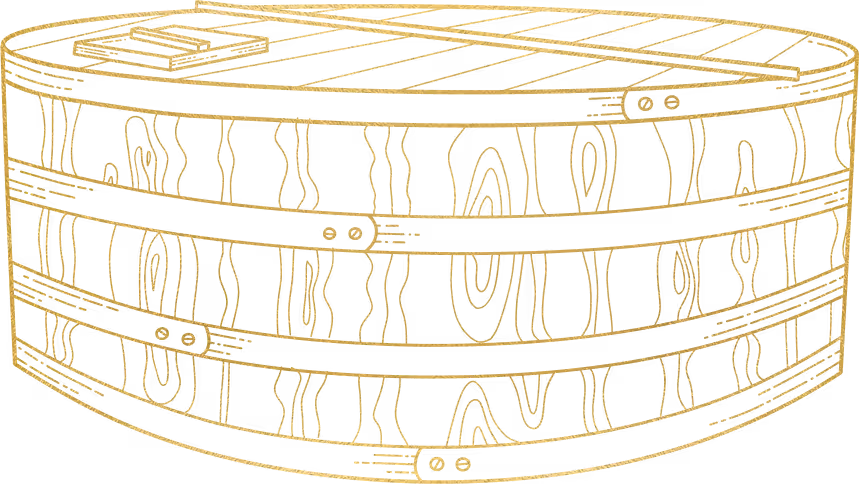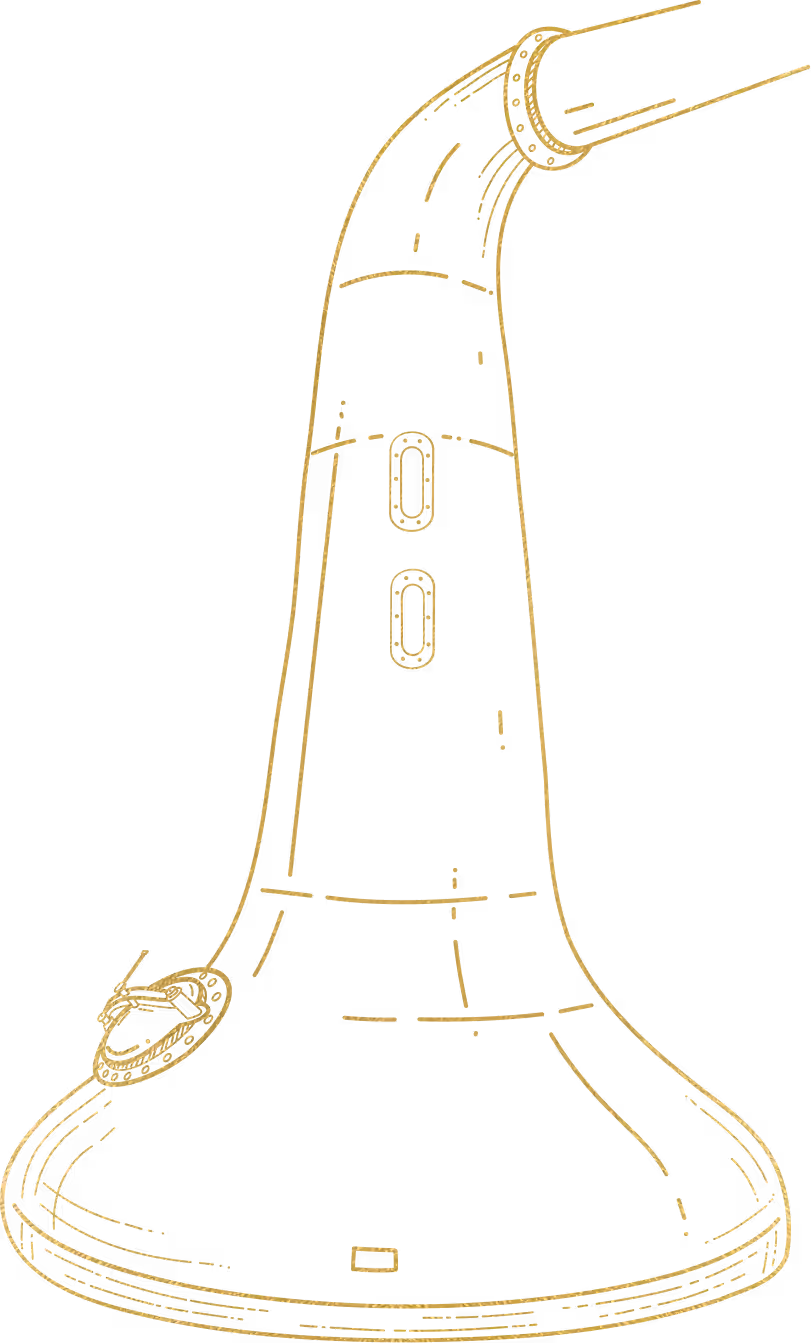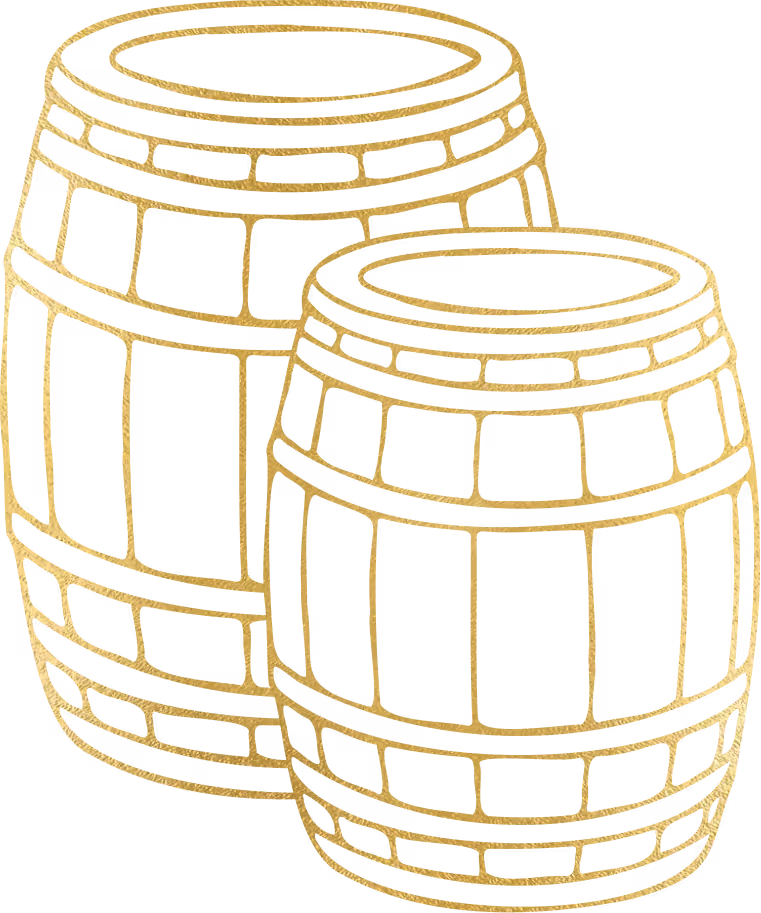If you can’t spend a week building a bamboo fly rod, you can at least get a taste for crafting something from scratch by tying our own flies.
You only need a few tools to get started (a vice, scissors, hook, and super glue). And the materials that form the body of the fly are common household items like yarn; Oyster used hair from his cat for the first fly he tied himself.
Orvis makes fly-tying kits with materials to create several common fly patterns that have been proven to fool fish. Choose large fly patterns (size #10 or #12) first, as they’re easier to complete.
Clamp the curved end of the hook into the mouth of the vice, then start winding yarn around the long arm of the hook to mimic the body of the insect you’re creating. See full instructions here. And if you want professional help, most specialty shops offer hands-on courses in building and tying flies to match the hatch of your local waters.

Masters
of Craft
Meet the visionary artisans who transform nature’s purest elements with time-honored traditions and cultivated experiences.
THE TEACHER

Bill Oyster built his first bamboo fly rod because he couldn’t afford to buy one. In his mid 20s and transitioning from a professional road cycling career, Oyster was spending most of his time fishing the small streams in North Georgia’s mountains, and fell in love with the romance and poetry of catching a fish with bamboo.
“There’s nothing practical about fly fishing with bamboo,” Oyster says. “If you want to catch fish, get a net or a can of worms. The whole point of fly fishing, especially with bamboo, is to do the thing in a more complex and satisfying way. It’s the doing of it that makes it special.”
Almost 30 years after first building that first rod, Oyster is still building bamboo fly rods. His hand-crafted tools, built in his workshop in downtown Blue Ridge, Georgia, are some of the most sought-after in the industry, appreciated for their precision craftsmanship. But Oyster’s greater passion is helping others build their own fly rods; He runs a popular workshop where anglers spend a week crafting their own rod with Oyster’s guidance.
“Most people never have the opportunity to make a functional thing from raw materials with their own hands,” Oyster says. “There will be no better rod to you than the one you built yourself.”
And that first fly rod Oyster ever crafted? It’s hanging above his fireplace. He still uses it to fish the small stream in his backyard.
“It’s not perfect, I don’t show it to a lot of people, but I decided I didn’t want to improve it. I’ve left it exactly as it is, with all of its flaws.”

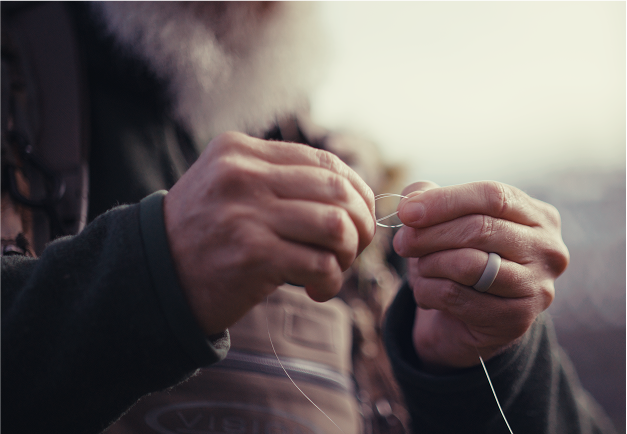
to catch your first fish (or master the cast)
Float or fish from the wide banks of this iconic river that runs from Yellowstone National Park to the Mighty Missouri, through vast valleys flanked by the often snow-capped Rockies. Learn from the best at the luxe-lodge experience of Orvis’s Trout School.
Tucked in North Georgia’s mountains, Lake Rabun is an ideal fishery—stocked with largemouth bass, walleye and bream—for anglers to learn casting without swift currents to manage. A campground, beach, and hiking trails all offer easy access to 25 miles of public shoreline.
The target 100-mile tailwater section below Bull Shoals Dam will showcase the species diversity of the White. Fish the same hole and you’ll have a chance to catch the Grand Slam of freshwater trout: a brook, rainbow, brown and cutthroat.
What’s the best reason to explore this spring-fed river that runs clear year-round? It’s sight-fishing: scanning flats and creeks from a boat, targeting healthy schools of popular saltwater species. Reel Florida can take you from first cast to landing your first redfish.
Beyond fast access to the high-quality trout waters of the Vail Valley, plus the legendary resort infrastructure of lodging, guides, and restaurants, Orvis offers an affordable one-day fly fishing school on the Eagle River to get the whole family hooked.


The sought-after professional bamboo fly rod maker who personally hand engraves his own rods—and puts them to apt use.





THE CHEF
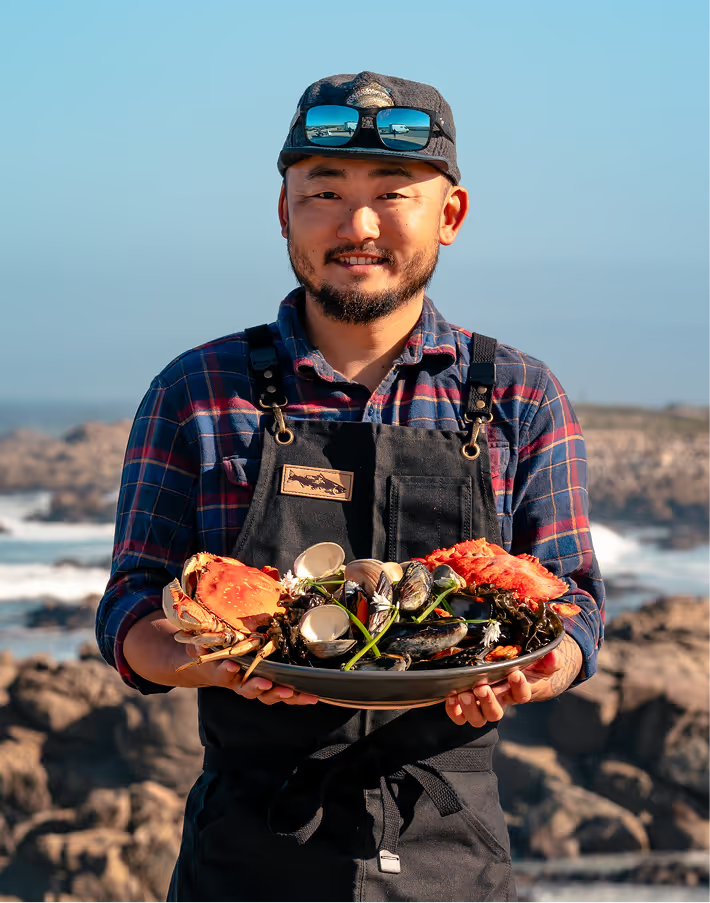

CHEF
Taku Kondo is an internet sensation. A trained sushi chef who has worked in some of the finest establishments in San Francisco, Kondo gave up the traditional culinary path to document his passion for cooking and the outdoors on YouTube.
“I loved being a chef, but being cooped up in a kitchen for ten hours a day was tough,” Kondo says. “I moved to California with my mom and two brothers from Japan when I was young and grew up in the outdoors, roaming free as a kid, so I decided that living in a van would be a good move.”
Now, viewers follow Kondo as he prepares restaurant-quality meals all over the world using ingredients he’s foraged and caught himself, whether it’s looking for clams off the coast of California or catching and smoking salmon in Alaska. You might not think fine cuisine like sushi and camping go together, but Kondo disagrees.
“I’m using live shellfish and live fish,” he says. “As a sushi chef, you can’t ask for fresher ingredients than that.”
Kondo obviously isn’t the only one who appreciates the juxtaposition of fine cuisine in wild landscapes. His YouTube channel, Outdoor Chef Life, has well over 750,000 followers, and he’s releasing a new cookbook, Coastal Foraging, this spring. The steady rise is proof positive of a growing desire for a closer connection to our food. And Kondo is excited to share how these elevated meals can be made in the wild, demystifying the art of foraging for the masses.
“It’s accessible to everyone,” Kondo says. “Fishing is hard. You get skunked a lot, but foraging is easy, especially on the coast, where you can gather mussels and clams, all this delicious protein that’s readily available. And the edible plants that grow all over have more nutrients than the versions you buy in stores.”

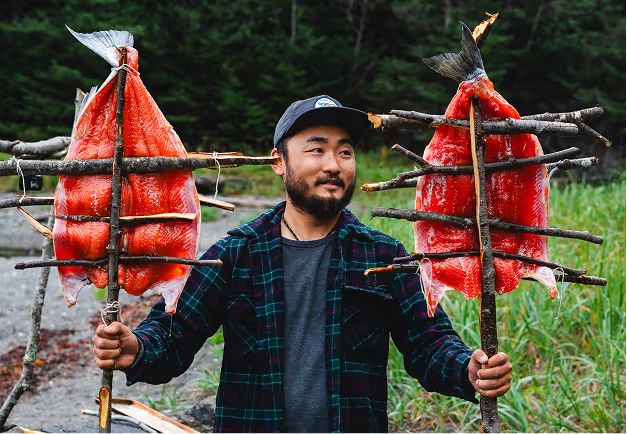
Foraging and cooking in the wild is not as intimidating as you might think. While regulations vary on public lands, you can harvest safely and legally on many common plants found in backyards across the country. The most common and arguably one of the most delicious? The dandelion.
Yes, that “weed” that seems to pop up everywhere is edible. In fact, every part of the dandelion is edible, from the root to the flower. The best part, however, is the “heart,” which is the base of the plant found underground and can be tender and buttery when prepared correctly.
First, forage dandelions in spring, if possible, when the plant is young. This also keeps the leaves from being bitter. Dig up the entire base of the plant. The part where the roots sprout from its bottom is considered the heart. Clean the plant thoroughly, and separate the leaves from the heart.
Add butter to a cast-iron skillet and heat over an open fire. Once the pan is hot, add several dandelion hearts to the pan, season with salt and pepper, and sauté for a few minutes until the plant softens and is browned. Add the clean leaves and juice from a quarter of a lemon to the pan, toss together, and serve.
for Cooking Outside
You can cook a meal just about anywhere outside, but these campgrounds offer dinner with a view.
North Carolina
Pitch a tent right on the beach at this national seashore that protects a handful of barrier islands off the coast of North Carolina, with the dunes at your back and the Atlantic out your front door.
Joshua Tree National Park, California
There isn’t a bad campsite in all of Joshua Tree, but the 124 car-camping sites at Jumbo Rocks are special because they’re tucked into a boulder field with tall sandstone boulders separating the sites.
Bahia Honda is arguably the prettiest state park in all of Florida, featuring white sands, palm trees, and teal water. Buttonwood Campground has a dozen sites (13–25) that overlook the water and have amazing sunset views.
Colorado National Monument, Colorado
One of the most underappreciated national monuments in the country, Colorado National Monument protects 32 square miles of canyons and rock spires. The Saddlehorn Campground sits on a ridge overlooking the Colorado River, offering grand views of the valley below.
South Carolina
Sitting on the shores of 7,500-acre Lake Jocassee, flanked by tall green mountains, Devils Fork has plenty of car-camping options that will put you near the water. But bring a boat so you can access the more remote island campsites and cook dinner while surrounded by water.


The amphibious meal-maker who plates intentional outdoor feasts with local ingredients gathered the hard way.






THE BUILDER
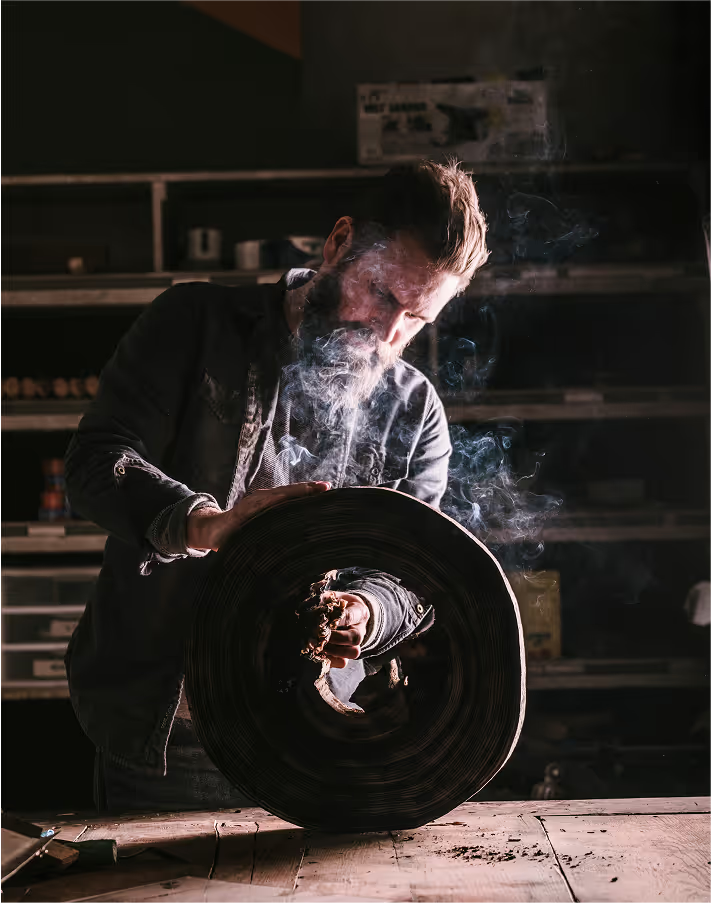

Zak Fellman seems restless. The Minnesota-born woodworker has enjoyed a series of successful businesses in the past two decades, founding Sanborn Canoe Co. with his cousin, crafting gorgeous canoe paddles out of woods like red alder, walnut, and cherry, then creating Pillbox Bat Company, where Fellman makes high-end baseball bats for collectors. And then there’s his art studio, HVRNT, where Fellman creates tree-ring prints from stump rounds of various hardwoods.
“I just like the process of making things,” Fellman says of his evolving passion for woodworking in a variety of different realms. “Once you figure it out and master it, it almost loses the magic. It’s the curiosity of making and learning new things that I like. And there’s always something new to learn.”
The first thing Fellman learned how to make from wood was a canoe. He grew up paddling the Boundary Waters with his family, and his grandfather was a dedicated woodworker who offered the tools and guidance necessary to complete the job. Fellman and his cousin spent an entire summer building that first canoe out of strips of cedar.
“We went into the process not knowing anything at all and learned a lot of things that summer,” Fellman says. “The canoe floated. I bet if we would have built a second one, it would’ve been better.”
But Fellman was already on to the next thing: handcrafting canoe paddles out of the extra wood leftover from his canoe project, and Sanborn Canoe Co. was born. And then baseball bats, and then tree-ring prints—the list goes on. Each of these projects requires a different discipline and technique, but a common theme runs through all of Fellman’s creative endeavors. “It’s the marriage of functionality and beauty,” he says. “That’s what’s super cool to me. I make art, but it’s art people can use. That’s what I enjoy.”
like to use.


Though Fellman started with a canoe, he recommends an easier entry into woodworking.
Follow this easy three-step process to create your own functional art.
Choose a round from a fallen tree that matches the size of the table you want to make. Any hardwood species will do. Clean the stump of any dirt or vines. Then, using a chainsaw, make sure the top and bottom are level.
Next, strip the round of its bark with a sharp hatchet. Sand the entire surface until it’s smooth. Start with a heavier-grit sandpaper and finish with a finer grit.
Finally, apply a clear polymer to seal the round from the elements. The polymer will also enhance the wood’s natural tones, bringing out different shades. (You might need to apply two coats of polymer.) Dry and enjoy.
Like wood and water? Here are three paddle trips through towering old-growth forests.
The Boundary Waters that Fellman grew up paddling contains more than 1 million acres of lakes, rivers, ponds, and forest, and almost half of that forest is old-growth. In fact, the Boundary Waters contains one of the largest remaining uncut forests east of the Rockies. Sawbill Lake makes for an easy day trip for first-time visitors. Connect Seagull and Saganaga lakes for a primo weekend outing.
This national park gem has the largest expanse of old-growth bottomland hardwood forest on the East Coast. And the best way to explore Congaree is by canoe, as the slow-moving Cedar Creek winds through the park, passing between the massive cedars that rise directly from the water.
One of the largest designated wilderness areas in the Adirondacks, Five Ponds is packed with water, from ponds to lakes to rivers to wetlands, all of which are surrounded by old-growth red spruce and balsam fir. It’s an ideal location for a multiday paddle combining river miles with the backcountry ponds.


The Boundary Waters woodworker who reinvents the form to create functional art, especially for the best boreal lake-hopping conditions





THE PROCESS



THE VIEWFINDER
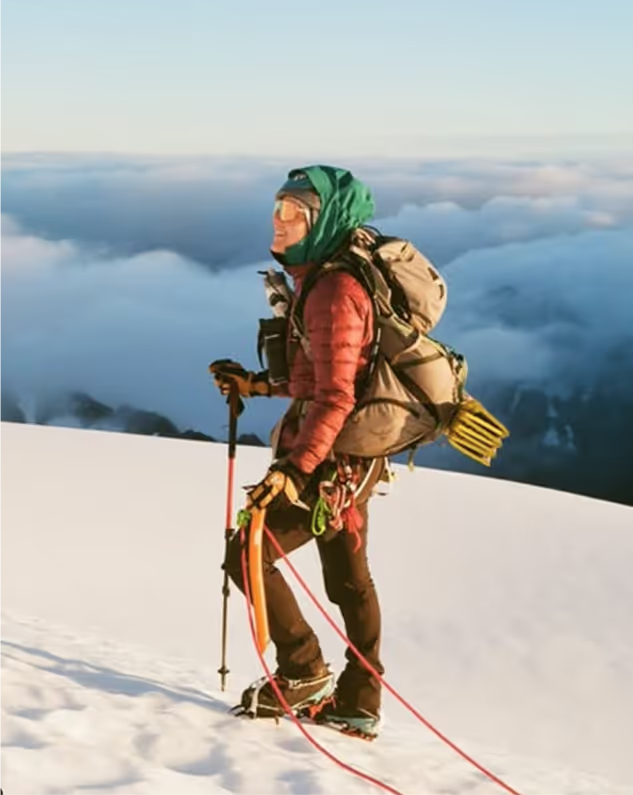

Scroll through Sonja Saxe’s social media feeds and you’d think the photographer spends all of her time hopping from one far-flung location to the next. Her photos are stunning, depicting hard-to-reach backcountry scenes full of ice, towering peaks, and serene lakes. The most impressive feat? She does it all as a weekend warrior. Saxe is an established adventure photographer with a nine-to-five day job in Seattle as a product merchandiser for Eddie Bauer. That’s why her weekend adventures are so important, and why she decided to start capturing them on film.
“I’ve found that going on an adventure fills up my cup emotionally even if I may feel exhausted physically,” Saxe says. “I come back from the trip feeling reinvigorated, inspired, and fulfilled. And those are the feelings that keep me going through the workweek.”
Saxe picked up photography shortly after taking up hiking, teaching herself the craft by watching YouTube videos, taking the occasional online tutorial, and lots of trial and error.
“I quickly learned that buying a camera doesn’t make someone a photographer,” Saxe says. “The best photos elicit a physical reaction. They can actually stop me in my tracks or stop my thumb from scrolling further on my phone. They make me forget where I am for just a moment.”
And what exactly constitutes an ideal photo in Saxe’s opinion? It’s all about light and composition. She points to Ansel Adams, arguably the greatest landscape photographer of all time, as her model.
“He composed his photographs in a way that takes your eyes on a journey through the frame,” Saxe says. “That visual journey is what great photography is all about.”

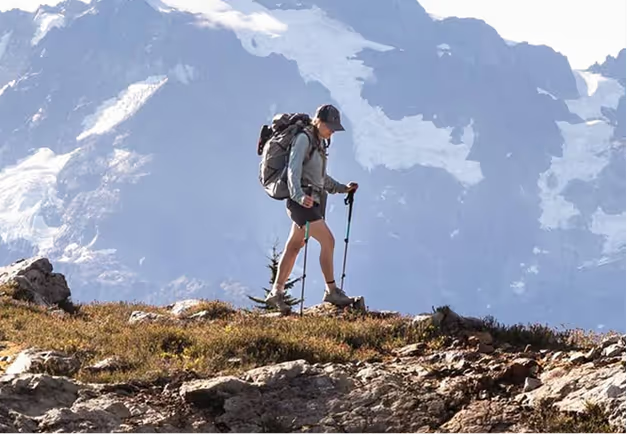
Want to level up your social media photos? Consider each image you make a crafted composition. Here are three questions Saxe asks herself before she snaps a shot.
1. Does the photo work at eye-level, or is it better when you kneel down and take it from ground level so the foreground is filled? Changing the angle you take a photo from can dramatically change its composition.
2. Where in the frame do you want your subject? Putting the subject in the center of the photo is most people’s default choice, but play with moving that subject around in the frame to bring out other elements in the composition. Think about how the viewer’s eye will move through your photo.
3. Where is the lighting coming from, and how is that affecting your subject? Would it be better to take the photo from a different angle to account for the lighting?
Our national parks offer some of the most photo-worthy scenery in the United States. Here are five options, whether you want to capture the Milky Way or an elk.
Mount Baker National Recreation Area, Washington
On a clear day, you can see Mount Baker from downtown Seattle, but for the ultimate view of this snowcapped volcano, Saxe likes to head to Artist Point, an overlook off the Mount Baker Highway with a grand view of the volcano. From the parking lot, you can also pick up the Chain Lakes Loop, a 6.5-mile hike past backcountry lakes and meadows that treats backpackers with multiple views of Baker.
Big Bend National Park, Texas
The stars are bigger over Texas, or at least the skies are darker in far West Texas, hundreds of miles from the nearest significant light pollution. Experience some of the country’s darkest skies throughout the park, or join ranger-led night sky programs. For easy backcountry access, drive the 30-mile Ross Maxwell Scenic Drive, which features a handful of pullouts and overlooks to set up a camera close to your vehicle.
Yellowstone National Park, Wyoming
Yellowstone is a wildlife photographer’s dream, brimming with big game like bison, elk, bears, and wolves. Lamar Valley, a broad grassland divided by the Lamar River, is a hot spot for the most coveted species, including the elusive grizzly bear. Show up at dawn or dusk, when the critters are most active, and keep your distance. It’s illegal to approach wildlife in the park.
Shenandoah National Park, Virginia
Shenandoah protects a series of mountain ridges that are covered in hardwood forests. The scene is incredibly green in spring and summer, but when the temperature cools, the leaves turn multicolored, putting on a show that would make Jackson Pollock proud. Drive the 100-mile Skyline Drive, a two-lane road that curves through the heart of the park, with dozens of overlooks and trailheads to keep you entertained.
Joshua Tree National Park, California
Picture fields of poppies coloring the desert floor in a carpet of bright yellow. That’s the scene you’ll find in California after a wet winter, particularly in Joshua Tree. And the poppies are just the beginning. The park is overflowing with wildflowers during spring and summer, from desert dandelions to multiple species of blooming cactus.


A weekend warrior with a professional focus on capturing the deep scenes and awe-filled landscapes of images that last.





THE SEARCHER
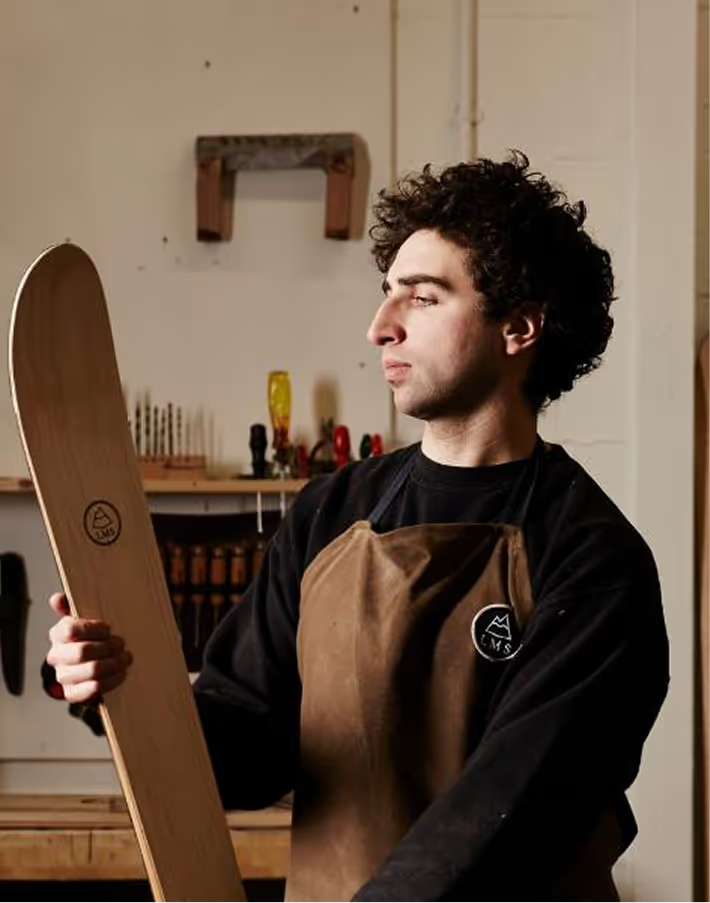

Jamie Kunka has always made things with his own hands. When he was a kid, he built longbows out of local timber, learning the strengths and weaknesses of different tree species. Then he built lightweight composite racing cars in college. Now, Kunka, an avid backcountry skier, builds wooden skis for a living, using timber harvested from forests near his workshop in Scotland.
“I’ll never forget building and skiing my first wood ski,” Kunka says. “That feeling of solid wood beneath my feet and how light it was and how well it turned. From that first experiment, I just kept trying to make a better and better ski.”
Today, Kunka’s designs, Lonely Mountain Skis, are shipped all over the world to skiers looking for a piece of art that’s refined enough to hang on a wall but performs well in the snow. “The beauty and individuality of each piece of wood makes every one of my skis unique in its own way,” Kunka says, adding that the performance capabilities of using wood as a core material in his skis are unparalleled. “Wood makes an incredibly elastic and resilient ski that’s sustainable and can last many years.
”Scotland’s rugged terrain and spirit of self-reliance inspire Kunka’s approach to his craft. He considers a variety of Scottish traditions when building his skis, from the native skiing pioneers who tackled the munros on wooden skis to the distillers who create whisky from local ingredients. After all, Aberfeldy has been crafting whisky in the same mountains that Kunka loves for the last 125 years.
“I feel a connection to the craftspeople in Scotland, and hopefully my skis give a nod to those sort of pioneers,” Kunka says. “I see parallels throughout the different crafts too. A whisky maker uses different types of wood to bring about different characteristics of the scotch, just as I use a combination of different woods to achieve the perfect harmony in the ski.”
That sustainability factor is a key element to Kunka’s process. He grew up skiing the resorts and backcountry of the Scottish Highlands and remembers the steady, cold winters of his youth, when roadside snow poles were regularly buried by powder. Those conditions are harder to find as winters grow warmer, but Kunka puts a lot of pride into ensuring his skis are as sustainable as possible.
“One of the most satisfying processes is sourcing and milling the local timber,” he notes, “which often comes from only a few miles away. There is something nice and cyclical about skiing on timber that’s sourced locally.”
incredibly elastic and resilient ski that’s sustainable and can
last many years.


To venture safely in the backcountry, every traveler must gear up with the minimum essentials: avalanche beacon, probe, and shovel. Beyond those starting necessities, a few choice gear extras can help you create a memorable day away from the crowds.
Climbing Skins
You have to climb before you can descend. Skins are precut attachments that stick to the bottom of your skis and glide in one direction but resist gliding in the other, allowing you to climb the hill without sliding backward.
Purpose-Built
PackThat JanSport from your school days isn’t going to cut it. A proper backcountry ski backpack will have dedicated internal organization for your required avalanche shovel and probe, as well as a spot for those skins. You’ll want a pack that also accommodates a hydration reservoir and has room for extra layers and snacks.
Versatile Poles Similar to downhill ski poles, these lightweight options adjust in length so you can make them longer on flat terrain or shorter on steep climbs. Both options will help you move faster on hard stretches of the tour.
You might not be able to build your own skis, but you can certainly build your own ski trip. Here are three ideal skill-gaining spots for your next backcountry laps.
Within the boundaries of Rocky Mountain National Park, you’ll find Hidden Valley, a former ski resort that shuttered in the ’90s but has become a go-to spot for backcountry purists thanks to its low-angle terrain and beautiful scenery.
One of the tallest mountains in the East, Mount Washington is renowned for its hard, technical touring options. Tuckerman Ravine collects snow blowing off the top of Washington and is home to arguably the best backcountry skiing on the East Coast—as long as you can handle the steeps.
Baker receives the most snow of any location in North America thanks to the storms that roll in from the Pacific and get trapped by the 10,781-foot active volcano, dumping more than 600 inches of powder every year. Several different aspects drop off the mountain, giving skiers and splitboarders a cornucopia of potential runs.


The Scottish skier who hunts for snowy escapes by blending his love of the sport with the craft of making the equipment





reward
Discover the key flavor notes that define an aged single malt worth the wait.
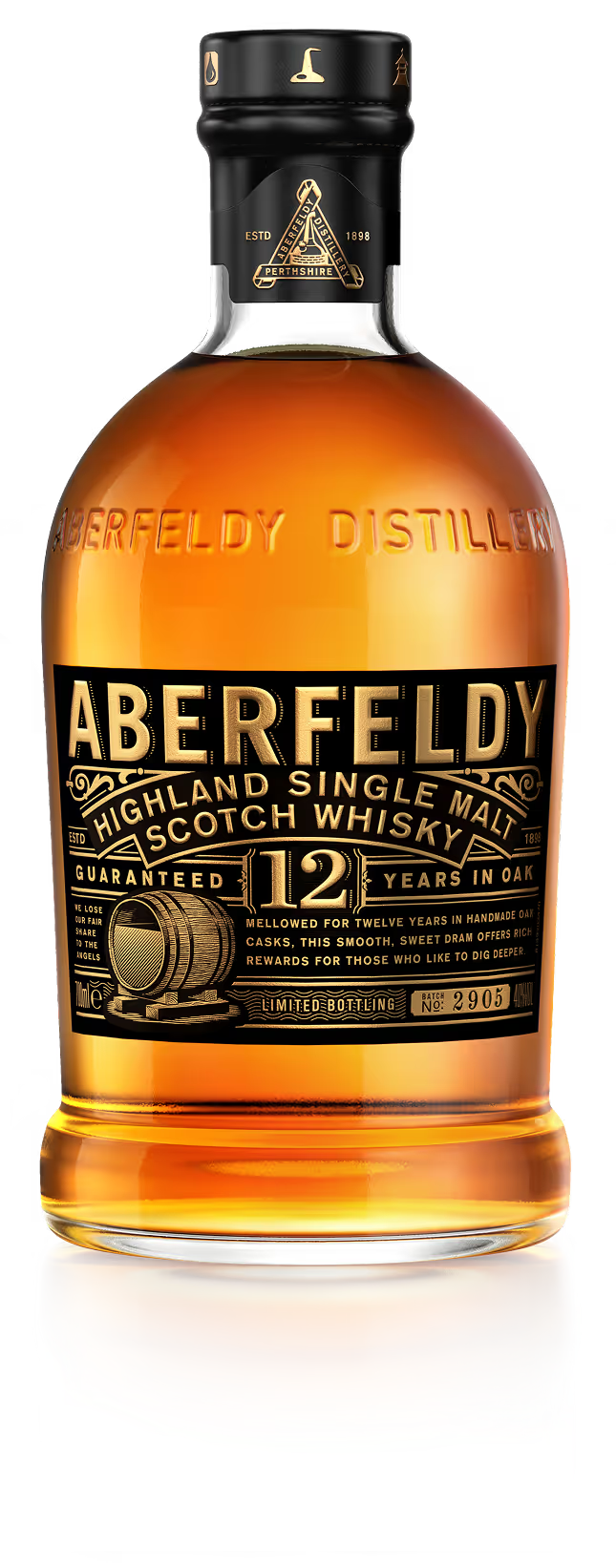

12 YEAR OLD
Aberfeldy 12 Year Old single malt scotch whisky is a honeyed dram with notes of fresh fruit, vanilla and cinnamon spice.
SHOP NOW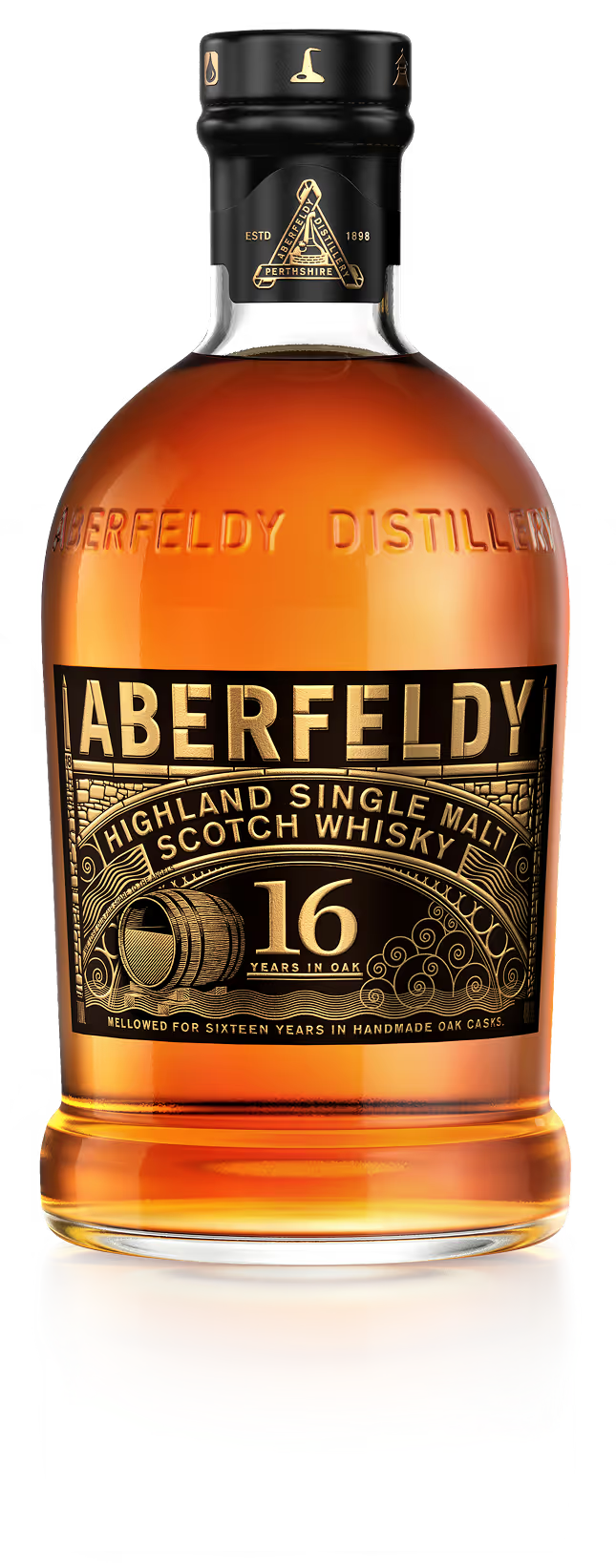

16 YEAR OLD
Additional finishing in Oloroso Sherry Casks impart honey, fruitcake, & dark chocolate to this Single Malt Scotch Whisky.
SHOP NOW

21 YEAR OLD
Aberfeldy 21 Year Old is a Single Malt Scotch Whisky with floral heather honey, creamy intensity, dried fruits & toasted coconut.
SHOP NOW4 casks are used across Aberfeldy’s range, each imparts unique flavor notes and character to the scotch whisky.

4 casks are used across Aberfeldy’s range, each imparts unique flavor notes and character to the scotch whisky.
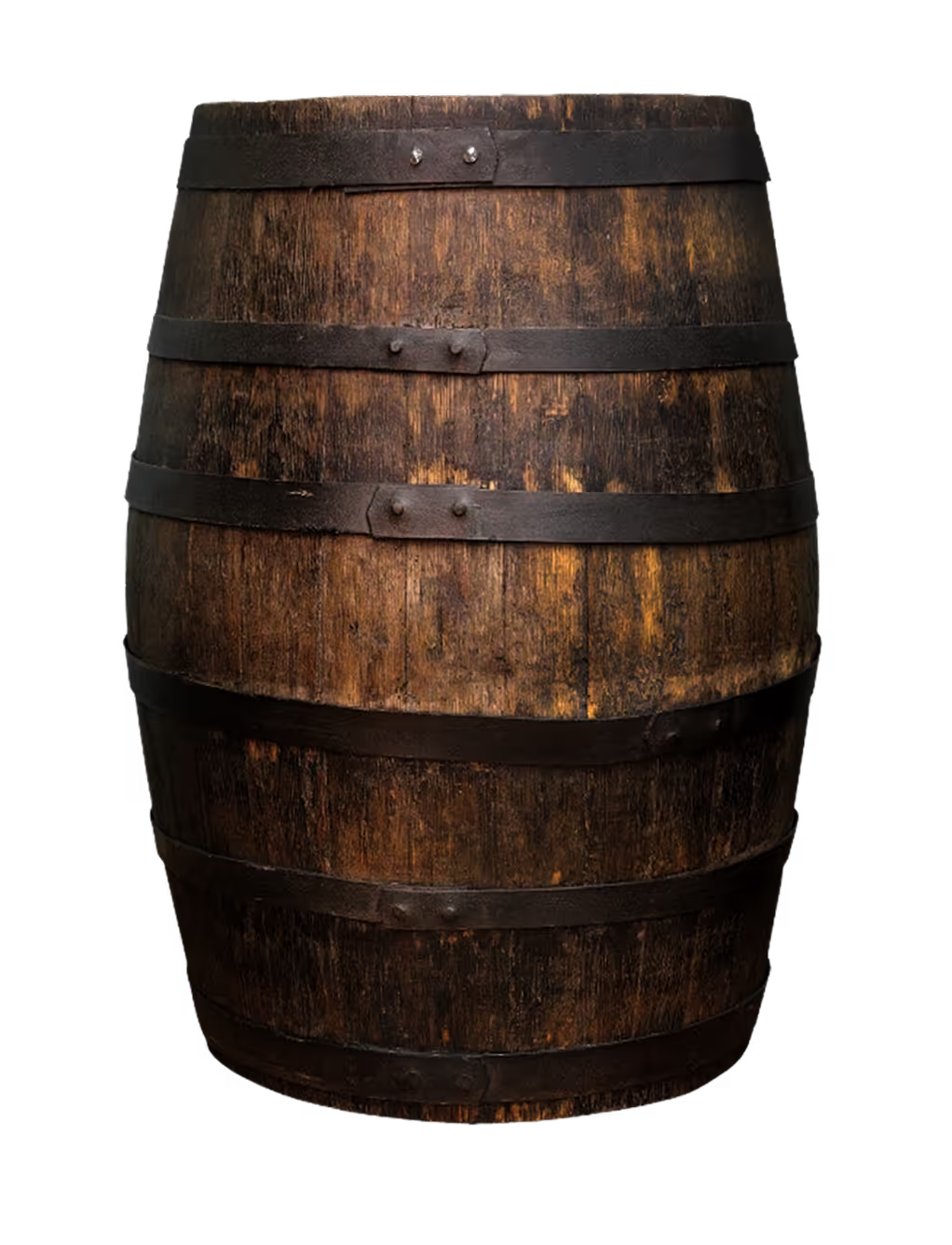
4 casks are used across Aberfeldy’s range, each imparts unique flavor notes and character to the scotch whisky.
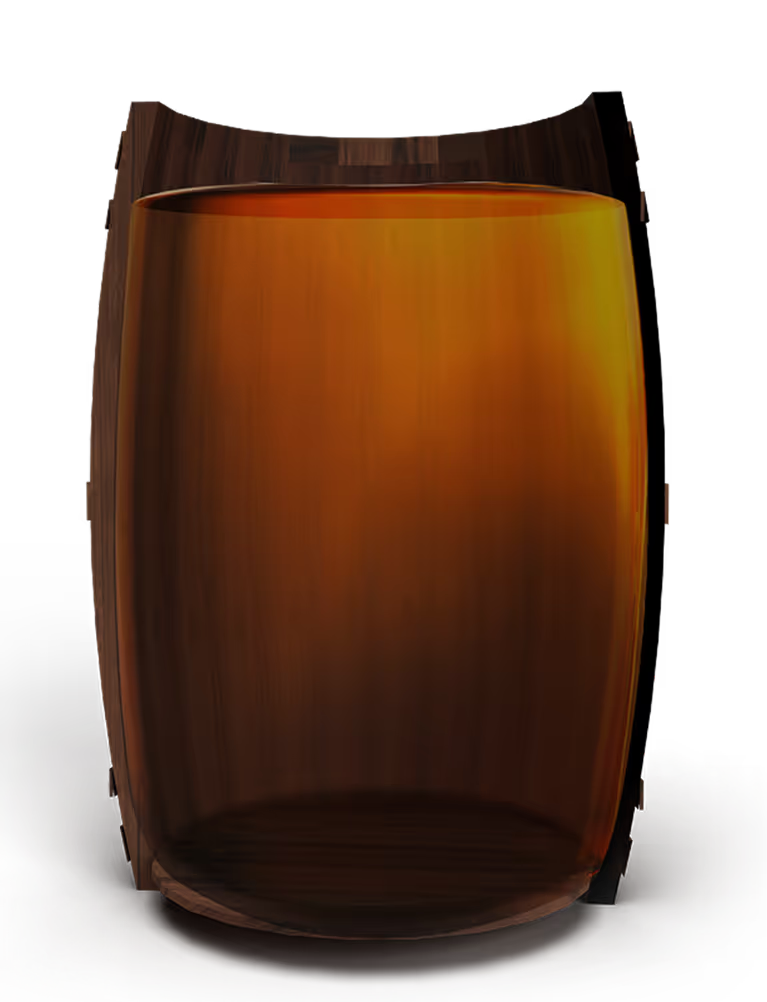
4 casks are used across Aberfeldy’s range, each imparts unique flavor notes and character to the scotch whisky.
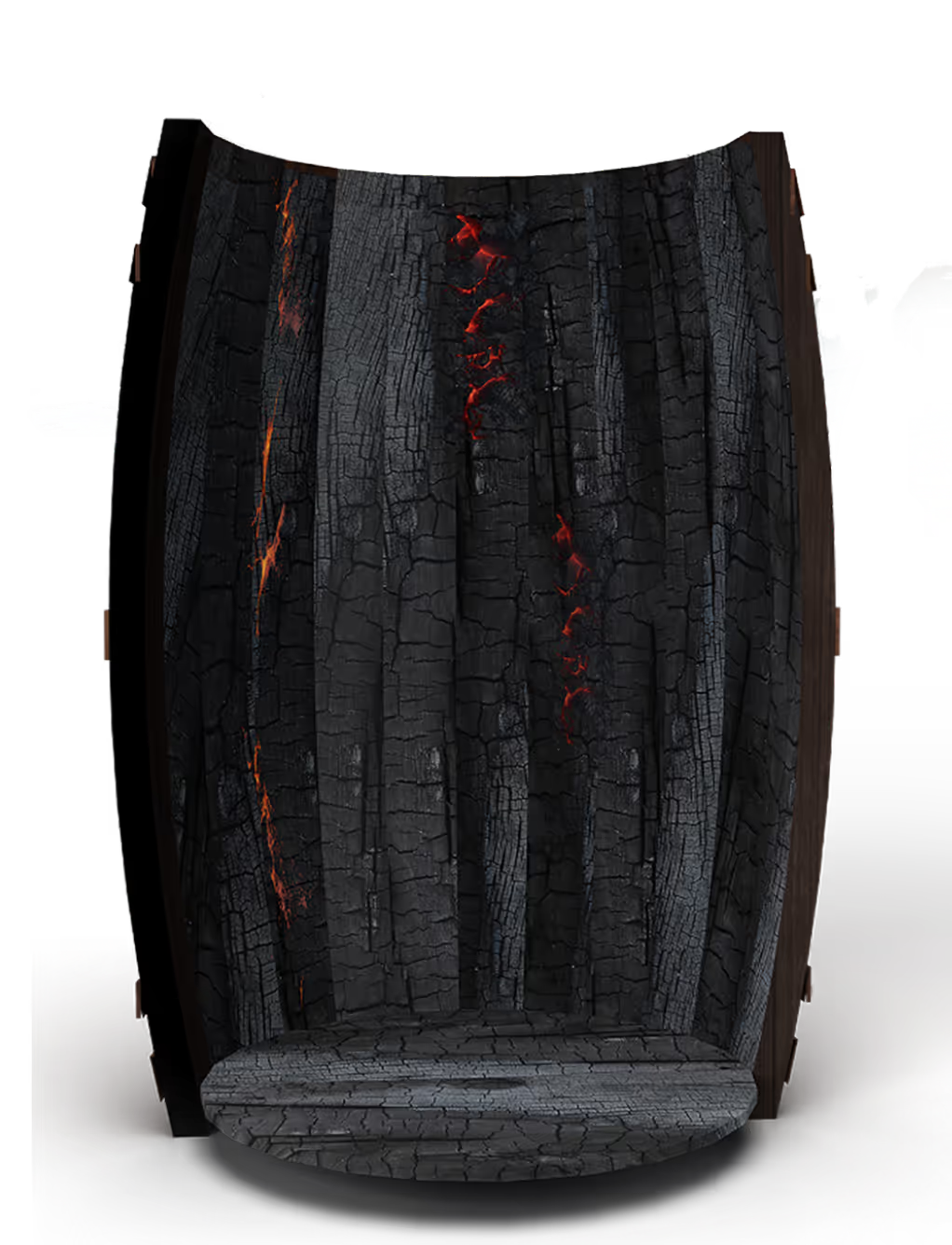
Sherry
Rich notes of dried fruit and spice, drawn from freshly emptied sherry casks.
Bourbon
Smooth flavors of vanilla and toffee, softened by time in seasoned bourbon barrels.
Light and balanced, with subtle floral notes and gentle oak influence.
Spicy and complex, developed through the deep toasting of re-charred casks.


“Whisky is magical when it interacts with wood, The two elements were made for one another.”



reward
Discover the key flavor notes that define an aged single malt worth the wait.

12 YEAR OLD
Aberfeldy 12 Year Old single malt scotch whisky is a honeyed dram with notes of fresh fruit, vanilla and cinnamon spice.
SHOP NOW
16 YEAR OLD
Additional finishing in Oloroso Sherry Casks impart honey, fruitcake, & dark chocolate to this Single Malt Scotch Whisky.
SHOP NOW

21 YEAR OLD
Aberfeldy 21 Year Old is a Single Malt Scotch Whisky with floral heather honey, creamy intensity, dried fruits & toasted coconut.
SHOP NOW
4 casks are used across Aberfeldy’s range, each imparts unique flavor notes and character to the scotch whisky.





Sherry
Rich notes of dried fruit and spice, drawn from freshly emptied sherry casks.
Bourbon
Smooth flavors of vanilla and toffee, softened by time in seasoned bourbon barrels.
Light and balanced, with subtle floral notes and gentle oak influence.
Spicy and complex, developed through the deep toasting of re-charred casks.


“Whisky is magical when it interacts with wood, The two elements were made for one another.”













